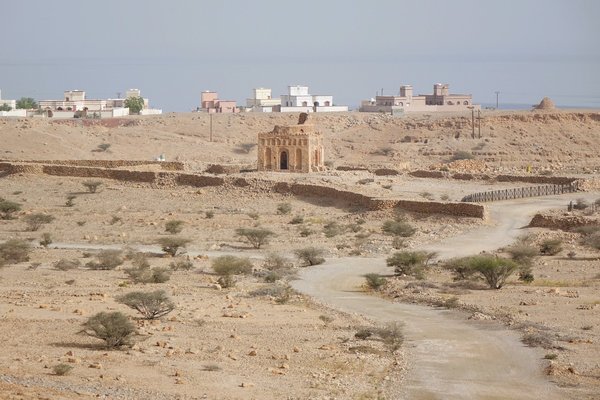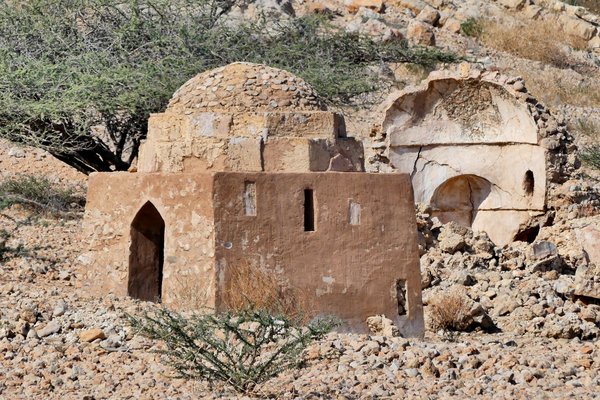Oman
Qalhat
The Ancient City of Qalhat was an important stopping point in the wider Indian Ocean trade network and the second city of the Kingdom of Hormuz.
The site blossomed between the 11th and 16th centuries. Its archaeological remains include the Friday Mosque (Bibi Maryam), necropolises, residences, and workshops. Evidence of trade with China and India has been uncovered.
Community Perspective: most early reviewers were restricted to a view from a parking place on the highway (as the site has been closed for renovation for ages). Clyde was brave and managed to get illegal entry to the remains.
Site Info
Official Information
- Full Name
- The Ancient City of Qalhat (ID: 1537)
- Country
- Oman
- Status
-
Inscribed 2018
Site history
History of Qalhat
- 2018: Advisory Body overruled
- ICOMOS advised Referral, amendment lead by Bahrain
- 2018: Inscribed
- Inscribed
- 2017: Incomplete - not examined
- As 'Ancient City of Qalhat'
- 2013: Revision
- Revision of former TWHS The Ancient City of Galhat (1988)
- Type
- Cultural
- Criteria
- ii
- iii
Links
- UNESCO
- whc.unesco.org
- Related
-
- andyinoman.wordpress.com — A good report from 2011
All Links
UNESCO.org
- whc.unesco.org — whc.unesco.org/
Related Resources
- andyinoman.wordpress.com — A good report from 2011
News Article
- June 26, 2019 muscatdaily.com — Fifth phase of restoration work at World Heritage site of Qalhat over
Community Information
- Community Category
- Archaeological site: Near Eastern
Travel Information
Muscat hotspot
Recent Connections
-
Silk Roads
Maritime Silk Road; "Qalhat exhibits th… -
Muscat hotspot
177km -
Digitized by Iconem
Connections of Qalhat
- Individual People
-
-
Marco Polo
Marco Polo wrote of Qalhat: “Calatu (his name for Qalhat) is a great city, within a gulf that bears the name of Calatu. It is a noble city, and lies 600 miles from Dhufar towards the northwest, upon the seashore. The people are Saracens and are subject to Hormos. And whenever the King of Hormos is at war with some prince more potent than himself, he betakes himself to this city of Calatu, because it is very strong, both from its positions and from its fortifications. They grow no corn there, but get it from abroad, for every merchant vessel that comes brings some. The haven is very large and good, and is frequented by numerous ships with goods from India, and from this city the spices and other merchandise are distributed among the cities and towns of the interior. They export also many good Arab horses to India. For as I have told you before the number of horses exported from this and other cities to India is something astonishing“. -
Ibn Battuta
During his visit, Ibn Battuta noted, that it had "fine bazaars and one of the most beautiful mosques." He further noted the mosque was built by Bibi Maryam and included walls of qashani. (wiki)
-
- Geography
-
-
Straits
Located at the Gulf of Oman, "a strait (and not an actual gulf) that connects the Arabian Sea with the Strait of Hormuz" (wiki)
-
- History
-
-
Located in a Former Capital
mythical first capital of Oman, second capital of the Kingdom of Hormuz -
Iron Age
The earliest historic evidence in the ancient city of Qalhat is an Iron Age tomb dating to around 500 BC (AB ev) -
Silk Roads
Maritime Silk Road; "Qalhat exhibits the cultural and commercial interchange of values within the trading range of the Kingdom of Hormuz, which extended to India and as far as China and South East Asia." (OUV)See en.unesco.org
-
- Religion and Belief
-
-
Notable mosques
Great Friday Mosque has been fully excavated
-
- Human Activity
-
-
Sea Ports
-
Man-made Terraces
funerary terraces (AB ev)
-
- Constructions
-
-
Cisterns
southern extra-muros cistern (AB ev) -
Mausolea
now dome-less mausoleum of Bibi Maryam -
Necropolises
Area includes the city's necropolises (AB ev)
-
- Timeline
-
-
Built in the 11th century
flourished in the 11th to 15th centuries CE (AB ev), though its origins are much earlier ("The earliest historic evidence in the ancient city of Qalhat is an Iron Age tomb dating to around 500 BC")
-
- WHS Hotspots
-
-
Muscat hotspot
177km
-
- Science and Technology
News
- muscatdaily.com 06/26/2019
- Fifth phase of restoration work at…
Recent Visitors
Visitors of Qalhat
- Alexander Barabanov
- Alexander Lehmann
- Ask Gudmundsen
- BaziFettehenne
- Bin
- Bram de Bruin
- Cheryl
- Christoph
- Christravelblog
- Clyde
- Csaba Nováczky
- Els Slots
- Fmaiolo@yahoo.com
- George Gdanski
- Grzegorz Andruszkiewicz
- Hammeel
- Harry Mitsidis
- Iain Jackson
- Ivan Rucek
- Jawnbeary
- jballard650
- Jean Lecaillon
- João Aender
- Kbecq
- KentishTownRocks
- Kjlauer
- Kurt Lauer
- Laurine
- Loic Pedras
- Maciej Gil
- marcel staron
- Martina Rúčková
- Mihai Dascalu
- Mikan22
- Milan Jirasek
- Miloš Tašković
- Monica66
- Morodhi
- Patrik_globe
- Persian Globetrotter
- Philipp Leu
- Philipp Peterer
- Pieter Dijkshoorn
- Piotr Wasil
- Rachel Perkins
- Randi Thomsen
- Rick Ohm
- Roger Ourset
- Roman Bruehwiler
- Roman Raab
- Slavi
- Svein Elias
- Szucs Tamas
- Tarquinio_Superbo
- Thomas Buechler
- Vanessa Buechler
- Vincent Cheung
- Walter
- Wojciech Fedoruk
- Zach
- Zoë Sheng
Community Reviews
Show full reviews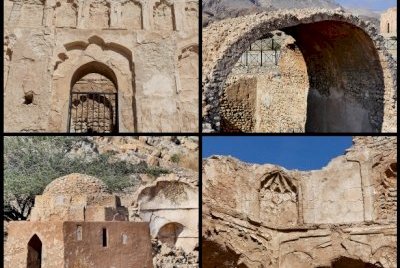
I visited this WHS in December 2020. Shortly after entering Oman on what was supposed to be a free SHORT stay visa and receiving the green light to roam freely without the need of quarantine, I drove from Muscat towards the direction of Sur to secure my first WHS tick.
I chose to start off with Qalhat knowing that it would probably be the least interesting to see, especially because it was still closed. That said, knowing that I was probably one of the very first tourists to enter Oman after it closed down for tourism and most probably the only one interested in visiting Qalhat very early in the morning, I set out to try my luck with Zoe's option #3 (the concrete steps are visible in Els' second photo). Not only was I lucky that the security guard was still having coffee unaware that I was exploring the farthest area away from the Bibi Maryam mausoleum (practically the only guarded area) but as Martina wrote, he usually expects people to approach from the uphill road from modern Qalhat.
Moreover, once I went down the steps and headed right towards the coast I saw several rubble walls and foundations (some of which are made out of coral!). Even though there aren't any information boards yet (judging from the metal poles already standing there, these will be installed soon together with a visitor centre/facility), I could easily find my way around the remains of the ancient city which …
Keep reading 0 comments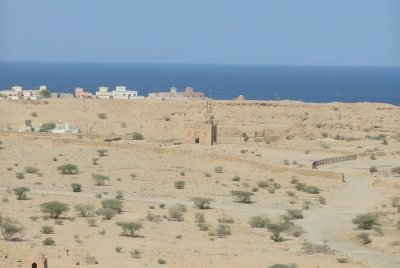
Qalhat looks like a joke nomination but apparently there is more than the lone building at the side of the highway. Unfortunately I can't report better news than the other visitors and my visit was in Dec 2018; you can “get” to the site in three ways:
• Snap a picture from the highway coming from the East. There seems to be a parking lot just for this purpose. If you have a good sense you can get a really close up view of the mosque standing there, or binoculars. Yes it is lame. Let's try number 2.
• Drive into Qalhat new town by following the misleading brown signs to the archeological site. Well, actually the signs stop after the highway turn-off but follow the road along the coast/beach and do not turn right into the town instead continuing onwards to the river where the road bends right and you can see the raised area beyond the river. Soon there is a gravel road turning left. No sign to indicate the archeological site is that way but soon a “CLOSED” sign greets you on the other side. For a brief moment you may think if you should drive up anyway but let me tell you there is a gate at the top and you will need to reserve downhill a gravel road. I didn't see any guards but this is probably out of the question. Still though, you could walk up the hill and see what's going …
Keep reading 0 comments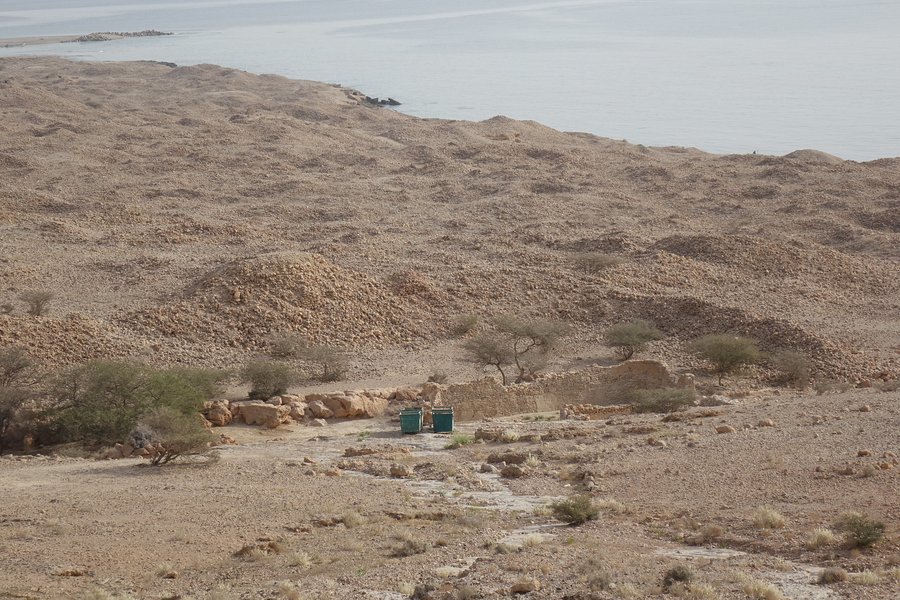
Qalhat has been one of the surprises of 2018’s WHC session. It got inscribed, after a proposal to overturn the Referral advice by ICOMOS. I was in Oman last April and of course, I was aware of the upcoming nomination. At the time though I decided to give it just a quick look, mostly because of the experiences at the site a week or two before by Martina & Ivan. They were not allowed to enter and the archaeological site seemed closed.
After staying overnight in the not too exciting city of Sur, I left my hotel at 7.30 the next morning. I had a hike on my agenda and needed to start before the heat got too bad. But unfortunately, at 7 o'clock, it felt already like being in a hot air oven. My planned hike was at Wadi al-Shab, about 25 kilometers north of Sur.
On the way there, you will also pass the ruins of the ancient city of Qalhat. There is a small parking space on the highway (in the direction towards Muscat from Sur) that is a good vantage point to take pictures and have a good look at its setting. The only major thing that still survives from this trading town is the Bibi Maryam mausoleum. It is easy to spot from the highway, as well as a total overview of the smallish archaeological area that is near the coast.
Qalhat is linked to the history of the Kingdom of Hormuz, a rather unknown …
Keep reading 0 comments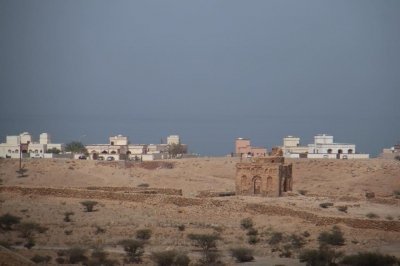
Qalhat is a former port town founded somwhere before 1500 BC, destroyed 3000 years later. Once a prosperous centre now lies buried in the sands of time, quite literally, as the only structure that remains visible is the Bibi Maryam mausoleum. It's accessible via a dirt road off the Qalhat town that can be reached when you pass the canal and bridges. Unfortunately, as we arrived to the foot of the hill it stands on, we were barred from going further by three men guarding the site, who pointed us to the notice board saying it's being closed for re-development of the area. What kind I'm not sure as there was no work to be seen. So we opted for the second best thing, drove the motorway past Qalhat towards Sur and then made a turn back in the Muscat direction. There's a parking place on the highway with the viewpoint of the Mausoleum and we took a picture.
Keep reading 0 comments
